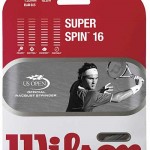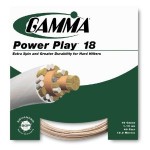
There are actually two different issues in Martin’s question that I would like to deal with. First, I will address his core question. Then I will talk about saving money on string and stringing.
A professional racquet stringer can string an average tennis racquet with 30 to 32 feet of string. Therefore a single package of string is enough to do one racquet. Some brands of string can also be purchased in reels of 660 feet. This is enough to string 18 frames.
The issue of saving money when getting a racquet strung, though, is more complicated than simply determining the price you are paying for a package of string.
The first question you have to ask is: who is stringing my racquet? Are they trained and/or certified by an organization like the US Racquet Stringers Association? If not, then how do you know that they are capable of stringing your racquet correctly?
The second question you have to ask is: does the price I am paying line up with the quality I am expecting? Generally speaking, price and quality go hand in hand. If you are paying low prices, then you should expect low quality work.
Remember that the best string in the world is useless if the guy who puts it into your racquet doesn’t know what he is doing. String that is improperly installed will break more often. It will also perform poorly when it’s not broken. So how much money are you really saving by going to a discount stringer?
